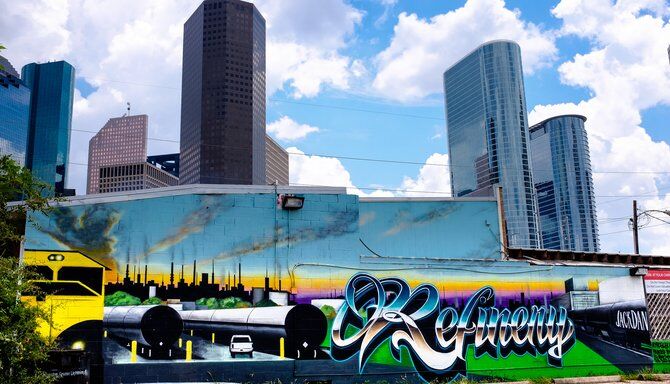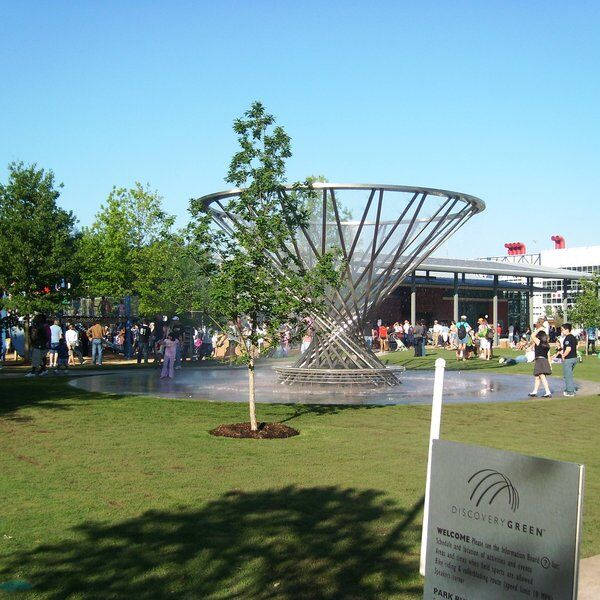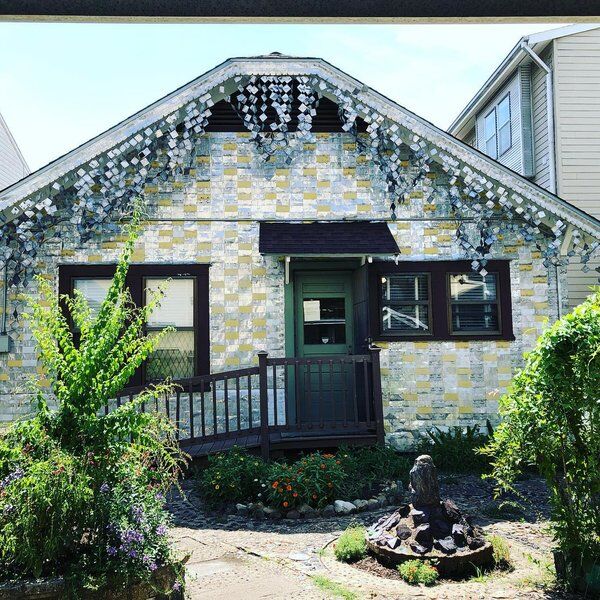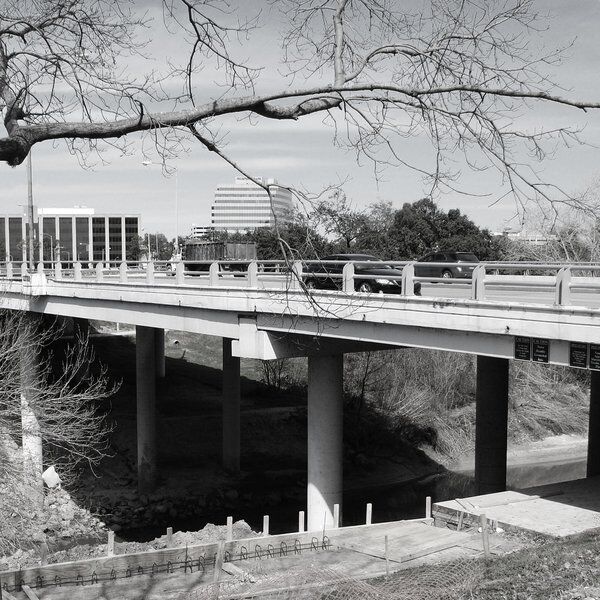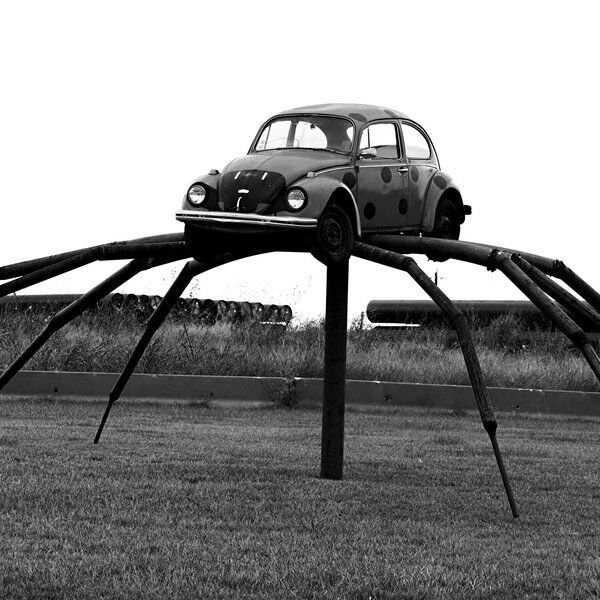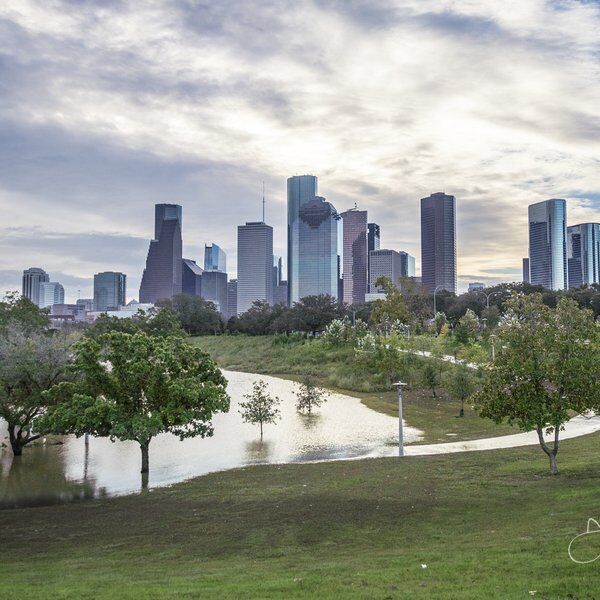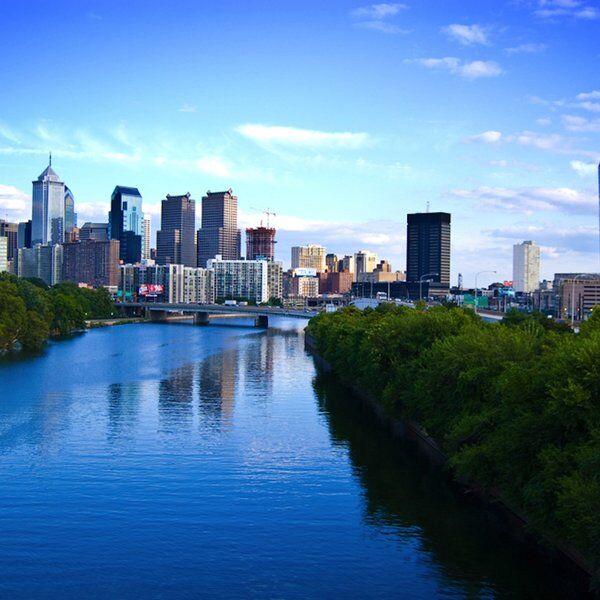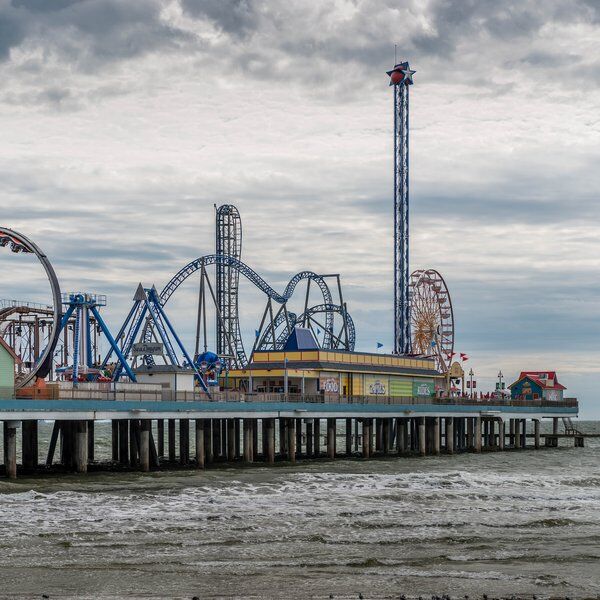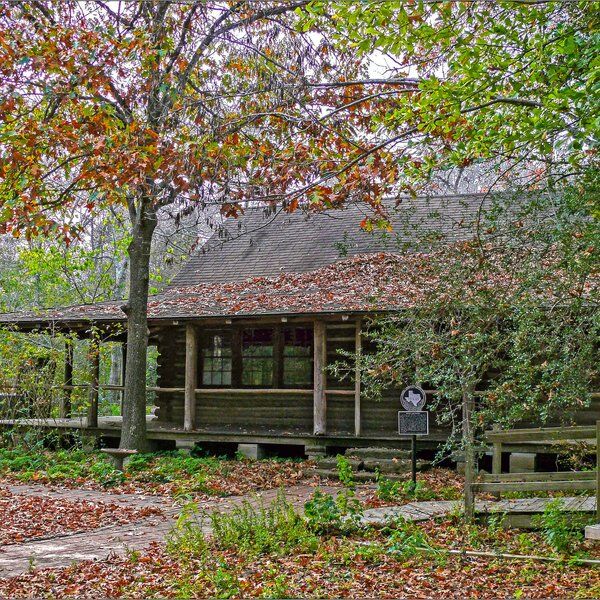Discover the Graffiti Park in Houston
The Houston Graffiti Building, affectionately known as Graffiti Park, is a colorful cultural landmark tucked away in Houston's East End. Transformed from a once abandoned warehouse building, this iconic structure has gained international fame in the last 25 years, attracting street artists from around the world.
Today the outdoor gallery and its vibrant street art murals are a popular tourist spot for taking pictures, creating social media content, and even shooting music videos. In typical graffiti fashion, the ever-changing artwork makes each visit unique.

The History of Graffiti Art
What is Graffiti?
Graffiti is a powerful form of artistic expression, allowing individuals to convey their values, beliefs, and even humor through public art. Historically, graffiti has been used to mark territories and has deep roots in gang culture, but it can also be a medium for political statements or simply beautiful art. Famous artists like Mario E. Figueroa (GONZO247), Van Gogh, and Frida Kahlo have utilized graffiti to beautify cities and express their beliefs.
Origins of Graffiti
The history of graffiti art dates back thousands of years to the Ancient Greeks and Romans, who etched their names and poems on buildings. However, modern graffiti as we know it began in Philadelphia in the early 1960s and spread to New York City, gaining momentum in the 1970s with artists like Cornbread and Cool Earl. These pioneers started the practice of "bombing" or writing their names across cities, which eventually evolved into more elaborate tags and symbols to distinguish themselves.
Houston’s Graffiti History
Houston’s graffiti scene, though younger and less documented than that of Philadelphia or New York, has carved out its unique place in the art world. In the late 1970s, the Urban Animals, a group formed by Edie Scott and Scott Prescott, became notorious for their graffiti, among other urban activities. This group, consisting of lawyers, bartenders, and artists, reached its peak in the late 1980s and was known not only for its rebellious behavior but also for its charitable contributions to the community.
The graffiti movement in Houston was heavily influenced by the rise of hip hop, with local rappers like Bun B and Slim Thug highlighting graffiti artists in their music videos and album covers. This cultural crossover helped bring graffiti into the mainstream, making it an accepted and celebrated art form.
Houston’s Graffiti Scene Today
Houston's graffiti art scene represents a broader acceptance of public art, transforming what was once considered vandalism into a celebrated form of expression. Today, businesses and the city commission artists to create murals, using street art to promote tourism and beautify public spaces.

History of the Graffiti Park Building
Originally constructed as a warehouse in the early 20th century, the Houston Graffiti Building has undergone a remarkable transformation. By the 1980s, this dilapidated structure became a blank canvas for local graffiti artists, providing a space to showcase their talents legally. The building was later saved from demolition in the late 1990s, by an artist collective and repurposed as a safe place for street artists.
Recognition for the Graffiti Building
Saving the Graffiti Park Building was part of a broader effort to embrace street art and add color and beauty to Houston’s downtown area. By the mid-2000s, the once-vacant building became a symbol of creativity and cemented its status as an iconic landmark in the city's Warehouse District.
Local businesses and art aficionados began to recognize the cultural value of the Houston Graffiti Building, which helped protect the space from redevelopment over the years. Over the years, the Houston Graffiti Building has also gained an international reputation as a must-visit destination for street artists.
The informal and large nature of the space allowed for continuous artistic evolution, making the building a vibrant and engaging site for both the artists and visitors who want to appreciate their work. In essence, the Houston Graffiti Building is more than just a structure; it is a living, breathing street art museum.
Graffiti Park Artists
The Houston Graffiti Park acts as a platform for both established and emerging artists. They use the walls to communicate messages, express emotions, and address social and cultural issues. Artists often collaborate on these pieces, blending their unique styles to create large-scale pieces that span entire walls. The result is a carefully created splash of color and patterns, where graffiti meets fine art. This fusion not only challenges traditional notions of what constitutes art but also celebrates the communal nature of graffiti culture.
Here are some of the artists that have contributed to the artwork on the Houston Graffiti Building:
- GONZO247: Mario E. Figueroa, Jr., is a leading figure in Houston’s street art scene, shaping its graffiti culture. Inspired by hip-hop culture and driven by a lack of local graffiti influences, GONZO247's pieces are dynamic and intricate, often honouring Houston’s heritage.
- Anat Ronen: Anat Ronen’s murals delve into social commentary, reflecting on human connections and nature. Her work stands out for its powerful messages and intricate detail.
- Dual: Known for his abstract approach, Dual's art features geometric patterns that invite a deeper exploration of the urban environment. His pieces often add layers of meaning to the graffiti park, enhancing its visual appeal.
- El Pez: El Pez, originally from Barcelona, brings his iconic smiling fish to Houston, symbolizing universal happiness. His whimsical characters add a playful contrast to the more serious themes present in the park.
- Daniel Anguilu: Began his graffiti career at 18, traveling the world, creating pieces on walls and trains, and dodging law enforcement. Today, Anguilu is celebrated for his work in Houston and helps maintain the Harrisburg Art Museum, a space displaying community graffiti and street artists.
Efforts are made to protect and maintain the Graffiti Park murals, ensuring they continue to be appreciated by future generations. As older murals fade, the building's walls undergo restoration, providing a fresh canvas for new artistic expressions.

More Graffiti Walls in Houston
Many of the murals created at the Graffiti Park were part of the Houston Urban Experience (HUE) Mural Festival, an annual gathering of artists launched in 2015. The festival has played a significant role in promoting street art and fostering a sense of community among artists and art lovers alike.
But Houston’s street art scene extends beyond the Graffiti Building, with notable murals scattered across the city. Here are some of the most amazing graffiti walls you can find:
Railroad Art Alley
Located near St. Arnold's Brewing in Northside, this collection features Ana Marietta's human/animal hybrids, Emily Ding and Helena Martin's bird dreamscape, Scott Tarbox's tripping dog, and Erik Del Rio's floating astronaut.
The Woodlands
Alex Katz's 35,000-square-foot flower mural frames a pocket park, while Dixie Friend Gay's glass tile mosaics under the Waterway Avenue Bridge depict local wildlife. These pieces add a touch of natural beauty to the urban environment.
Arts District Houston
This area, including Sawyer Yards, has a high concentration of working artists with pieces like MrDheo's "Houston, we have a problem" astronaut wall, created during the Big Walls Big Dreams festival.
George Floyd Murals
These murals around Houston memorialize the longtime resident with powerful tributes. These include Israel Rodriguez's gentle-giant depiction at LA Burgers & Daiquiris and Reginald Adams's "I Can't Breathe" mural in Midtown.
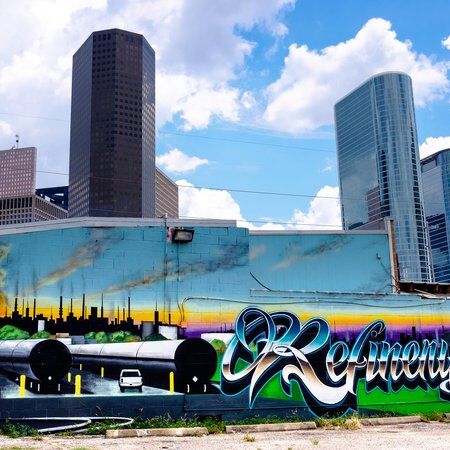
Visiting the Houston Graffiti Park
Situated at the intersection of Leeland Street and St. Emanuel Street, behind the George R. Brown Convention Center and close to BBVA Compass Stadium, the Houston Graffiti Park is easily accessible from various parts of the city. The Green and Purple lines of the METRORail service the area, and there is ample street parking available, especially during weekends and weekday evenings. For those who prefer biking, Houston’s BCycle share program is a convenient and eco-friendly alternative. The flat terrain around the building also ensures it is wheelchair accessible, making it inclusive for all visitors.
Exploring the Art: Big Walls Big Dreams Festival
In October 2022, 10 super-sized sponsored murals, curated by the international nonprofit Street Art for Mankind, were created in Downtown Houston. Pieces included CASE Maclaim’s bicyclist, Ana Marietta’s “Sharing the World,” Victor Ash’s horse mural on the Sam Houston Hotel, and Carlos Alberto GH’s 3D wildlife scene. An interactive app is available to help visitors locate and learn about these murals.
Photographing the Art
The Houston Graffiti Building is an ever-evolving gallery ensuring that each visit provides a new experience. Highlights include the work of Anat Ronen, whose murals resonate with themes of community and inclusion. Another popular spot is the "Greetings from Houston" mural by Daniel Anguilu, reminiscent of 1970s-style postcards, featuring bright, iconic Texas imagery.
It is encouraged to take photos of the graffiti before it changes. The loud colors and intricate details of the artwork also provide the ideal setting for photo shoots, family portraits, and event photography. Each weekend, the park buzzes with visitors snapping pictures against the murals, making it one of the most Instagram-ed locations in downtown Houston.

Graffiti Park for the Community
Beyond their IG appeal, the Houston Graffiti Building brings the community together through events such as graffiti festivals, mural unveilings, workshops, guided tours, and art shows, drawing residents and art-loving tourists together. The park also plays a significant role in supporting local artists by providing a platform for emerging talents. In the evenings, the area comes alive with people driving quads, motorcycles, and hot rods for the amusement of bystanders. Some murals, like those by Nicky Davis, are illuminated at night.
Dining Near the Graffiti Park
After your visit, be sure to pick up a custom graffiti art keychain souvenir. These keychains, available in various colors and materials, can be engraved with names, dates, or personal messages. Nearby breweries and restaurants like The Rustic, District 7 Grill, and Leeland House also offer a place to relax and enjoy the local scene, making it a fun destination for all ages. For those looking to extend their visit, nearby hotels such as the Four Seasons Hotel Houston provide comfortable accommodations.
Beyond the Graffiti Park: Discover Houston with CityDays
If you want to discover more natural phenomena in Houston, why not consider an upcoming CityDays Scavenger Hunt?
Scavenger Hunt tours are a great way to bring family and friends—or even work colleagues—together for an afternoon of great fun and adventure, solving clues and snapping photos. Clues will lead you to the big sights and those that you'd walk straight past.
For more information about our Houston Scavenger Hunts then click here: Houston Scavenger & Treasure Hunts - Immersive Urban Adventures | CityDays.
